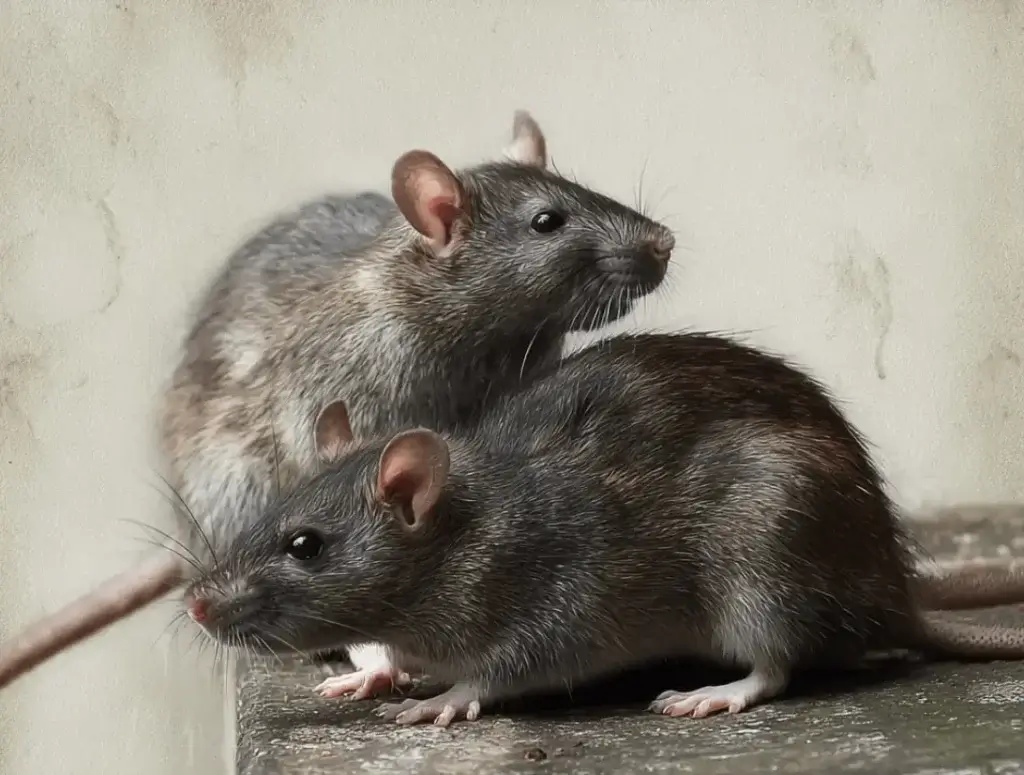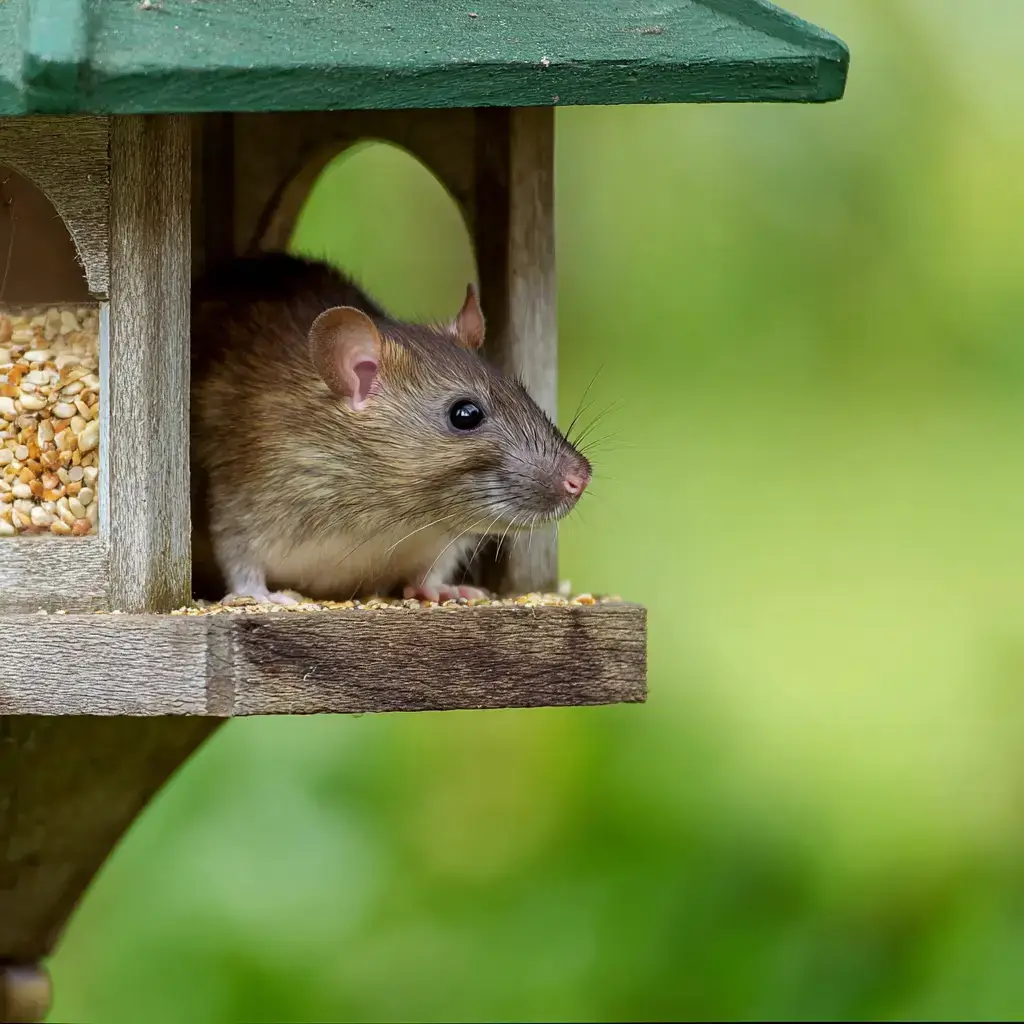
Roof Rats Identification
Roof rats are more than just a nuisance—they’re destructive, disease-carrying rodents that can cause serious damage to homes and businesses alike. At A-1 Pest Control, we specialize in identifying, controlling, and preventing roof rat infestations with proven methods backed by decades of experience.
Whether you’ve seen signs of roof rat activity in your attic or want to prevent future problems, our team is here to help you get rid of roof rats safely and effectively.
Table of Contents
What Are Roof Rats?

Roof rats—also known as black rats, fruit rats, or ship rats—are thin rodents known for their agility and preference for high places. These rats are notably longer than Norway rats, with tails that are often longer than their bodies. They have smooth fur, large ears, and scaly tails, giving them a distinct appearance among other rat species.
Roof rats tend to invade homes and commercial buildings by entering structures through small gaps near roof lines, eaves, and vents.
Where Are Roof Rats Found?
Roof rats are found worldwide, but are especially common in coastal states like North Carolina. They thrive in warm climates and are commonly found in suburban and urban environments where fruits, nuts, and stored food are readily available.
There are three subspecies of roof rats: the black rat, the Alexandrine rat, ad the fruit rat; but all share similar habits, diet, and nesting behavior.
Where Do Roof Rats Live During the Day?
Roof rats are nocturnal and prefer to stay hidden during the day in:
- Wall voids
- False ceilings
- Attics
- Dense trees and heavy shrubbery
- Garages and storage boxes
Their preference for higher ground makes attics and upper parts of buildings prime nesting spots.

What Do Roof Rats Eat?
These food hoarders have a varied diet but prefer:
- Fruits like citrus, berries, and bananas
- Nuts
- Grains and cereals
- Pet kibble and pet food
- Insects
- Bird seed
- Snails
Roof rats are notorious for contaminating food, especially when they access pantries, cupboards, and food preparation surfaces.
Common Signs of a Roof Rat Infestation
Identifying a roof rat problem early can help you avoid costly damage and reduce health risks to your household. There are several common signs that suggest a roof rat infestation, even if you haven’t seen the rodents themselves.
Health Risks & Concerns
Although the Northern House Mosquito may seem harmless, it’s known to be a carrier of some serious health risks.
Droppings
One of the most visible indicators of roof rats is their droppings. These are typically small, dark, and spindle-shaped with pointed ends, distinguishing them from Norway rat droppings, which are larger and have blunt ends.
Roof rat droppings are often found along baseboards, in attics, on top of insulation, or near stored food sources.
Sounds and Smells
Roof rats are nocturnal, so you may hear them before you see them. At night, listen for scratching, gnawing, or the pitter-patter of tiny feet coming from the upper parts of your home—especially in attics, wall voids, and false ceilings.
In addition to sounds, you may notice a strong, musky odor caused by their urine and the scent of their nests. This smell intensifies as the infestation grows and is another clear signal that you may have rats inside your home.
Visual Clues
While roof rats tend to avoid humans, direct sightings do occur—especially as infestations grow. You may also see greasy rub marks along walls, beams, and wooden structures, caused by the oil in their fur as they follow habitual travel routes.
Other visual signs include gnaw marks on electrical wires, drywall, insulation, and even plumbing—anything they can chew to gather nesting materials or access food.
Damage
If you've noticed unexplained damage to your home’s infrastructure, roof rats could be the cause. These rodents frequently chew through electrical wires, which can not only disrupt power but also pose a serious fire hazard.
You’ll often find shredded paper, fabric, or insulation used as nesting material, especially in attics, behind walls, or in boxes stored in garages. The presence of these makeshift nests, paired with the other signs above, points strongly to a roof rat infestation.
What’s the Difference Between a Roof Rat and a Regular Rat?
The most common “regular” rat species in North Carolina is the Norway rat, which differs from the roof rat in several key ways:
| Characteristic | Roof Rat (Black Rat) | Norway Rat |
| Size | Slender, 6-8 inches | Stocky, 7-10 inches |
| Tail | Longer than body | Shorter than body |
| Fur | Smooth fur, black intermixed with gray | Coarse brown/gray |
| Preferred Habitat | Higher ground, attics, trees | Basements, crawl spaces |
| Droppings | Pointed ends | Blunt ends |
Unlike norway rats, roof rats are more agile and highly adaptable to vertical spaces.
Why Are Roof Rats Dangerous?
These rodents are not just a nuisance—they can damage property, spread disease, and contaminate your living space in ways that aren't always immediately obvious.
They Spread Dangerous Diseases
Roof rats are known carriers of a number of dangerous diseases, including rat bite fever, leptospirosis, and salmonella. These illnesses can be transmitted to humans through direct contact with rat urine, feces, saliva, or bites. Even dried droppings and urine can release harmful particles into the air, which may be inhaled.
When roof rats move through your home, especially near stored food, pantries, or surfaces where food is prepared, they leave behind bacteria and pathogens that can easily enter your system.
They Trigger Food Poisoning
As food hoarders, roof rats often come into contact with food items, whether in cupboards, pet dishes, or trash bins. They can spread bacteria like salmonella and E. coli, which may cause food poisoning.
Rats frequently explore food preparation surfaces and leave behind urine, feces, or saliva, all of which can contaminate meals or kitchen tools. This makes proper food storage and surface sanitation critical in preventing illness during a roof rat problem.
They Chew Electrical Wires
One of the most serious threats posed by roof rats is their tendency to chew on electrical wires. Their strong teeth grow continuously, so they gnaw on hard materials like wiring, wood, and plastic to keep them filed down. This behavior can strip wires of their insulation and expose live electricity, greatly increasing the risk of electrical shorts or even house fires.
Chewed electrical wires are often found in attics, wall voids, and crawl spaces—hidden areas where a fire could go undetected until it’s too late.
They Cause Structural Damage
Roof rats can do extensive structural damage while building nests inside your home. These pests often settle in false ceilings, wall voids, insulation, and attics—places where they shred building materials to create cozy hiding spots. Over time, this activity can weaken insulation, compromise wall integrity, and even damage HVAC systems.
As they move through wooden structures and tear up materials, the cost of repairs can quickly escalate. If left unchecked, a roof rat infestation can reduce the energy efficiency of your home and cause long-term harm to its structure.
How Do You Get Rid of Roof Rats?
Professional rodent control is the most effective way to get rid of roof rats and prevent reinfestation. Our roof rat control process involves:
Inspection
We begin with a thorough inspection of your home or business to locate entry points, droppings, nests, and signs of roof rat activity.
Exculsion
We seal entry points around vents, pipes, upper parts of walls, and other vulnerable areas.
Trapping & Removal
Strategic placement of traps helps eliminate existing rats without the use of dangerous chemicals indoors.
Sanitation & Prevention
We recommend removing stored food, securing airtight containers, trimming fruit trees, and cleaning out storage boxes.
Ongoing Monitoring
Our team provides follow-up visits and prevention tips to ensure the problem stays gone.
Tips to Prevent Roof Rat Infestations
Here are easy ways to keep your home or business rodent-free:

- Store all food in airtight containers
- Clean up spilled bird seed and pet food promptly
- Trim back fruit trees and remove fallen fruits
- Seal cracks and holes around vents, soffits, and eaves
- Declutter storage boxes and avoid stacking near walls
- Remove heavy shrubbery and yard debris near the house
Frequently Asked Questions
Do Roof Rats Come Out During the Day?
No, roof rats are nocturnal and typically remain hidden in false ceilings, wall voids, or trees during daylight.
Do Roof Rats Bite?
They can, especially if threatened, and may transmit rat bite fever, though bites are rare.
Can Roof Rats Make You Sick?
Yes, through contaminating food, droppings, and urine, they may spread dangerous diseases such as salmonella and rat bite fever.
How Can You Tell You Have a Roof Rat Problem?
Look for telltale signs such as droppings, gnawed wires, and nests in higher ground areas like attics.

